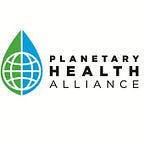Nature based Solutions — A new horizon to combat antimicrobial resistance
Muhammad Asaduzzaman
Research Fellow, Centre for Global Health, University of Oslo, Norway
PHA Next Gen Member
Gabriella Rodriguez
2020 PHA Campus Ambassador, University of Oslo, Norway
Antimicrobial resistance (AMR) is the capability of microorganisms to persist and continue their life cycle when they are exposed to antimicrobial drugs. Infections caused by AMR organisms are difficult or impossible to treat, resulting in significant morbidity and mortality worldwide. With increased focus on AMR organisms and antibiotic resistance genes (ARGs) in the environment, we can better understand and potentially prevent the spread of AMR throughout the environment, animals and humans. AMR is one of the most serious and widely discussed current global health issues. Development of AMR is a complex phenomenon that depends on several factors such as microbe characteristics and socioeconomic, legal, political, environmental and behavioral determinants. While hospitals are typical hot spots for multidrug-resistant organisms, these organisms are known to exist everywhere. This means that the natural environment can be a reservoir for resistant pathogens. Previous discussions and solutions to the AMR problem have often overlooked the role of the environment. However, Nature based Solutions (NbS) (Figure 1) may change this notion.
According to the International Union for Conservation of Nature, NbS are defined as “actions to protect, sustainably manage, and restore natural or modified ecosystems that address societal challenges effectively and adaptively, simultaneously providing human well-being and biodiversity benefits.” The societal changes that NbS addresses include climate change, food and water security, disaster risk, human health, and economic and social development. Several published case studies have successfully adopted the basic principles of NbS such as ecosystem-based management, adaptation and mitigation, green infrastructure and climate adaptation services. If NbS were to be applied in the fight against AMR, it would require an interdisciplinary approach.
I (MA) have been working on the environmental dimension of AMR for years, and am now focusing on the environmental solution to this problem. Last year, I attended an interdisciplinary summer course on NbS in Malta. Based on interactions with other young talented natural scientists and ecosystem service experts at this event, our aim is to implement NbS in the mitigation efforts against AMR. Aquatic systems are often polluted and represent a significant source of resistant pathogens. In addition, there is scientific evidence that environmental heavy metals (from contaminated soil and water) induce multidrug-resistance. The basic mechanisms through which NbS emerges are either co- or cross-resistance through horizontal gene transfer between bacterial species or mutations, even at sub-lethal doses of metals. Several research groups have implemented NbS in ecological restoration and sustainable management plans for rivers and wetlands to enhance and maintain fisheries-based livelihoods, reduce flood risk and increase tourism.
Therefore, we argue that we can include the environmental management of drug resistant pathogens in this nature-based restoration scheme through maintaining water quality. A recent project to restore green infrastructure in Barcelona has improved air quality, water cycle regulation, mental health and general well-being. As an example, if we add microbial air quality to the green infrastructure program, then we may be able to reduce the frequency of airborne resistant organisms as well. NbS which deal with all societal challenges relevant to AMR are capable of simultaneously targeting the sources and reservoirs of multidrug resistant organisms. Therefore, the NbS and interventions which are parts of ecosystem approaches can potentially impact human health in a positive way, and should be considered as innovative solutions for global AMR containment. To solve AMR, we must emphasize interdisciplinary actions like NbS, and we need to change our perspective to find these innovative solutions for the global challenge of AMR.
